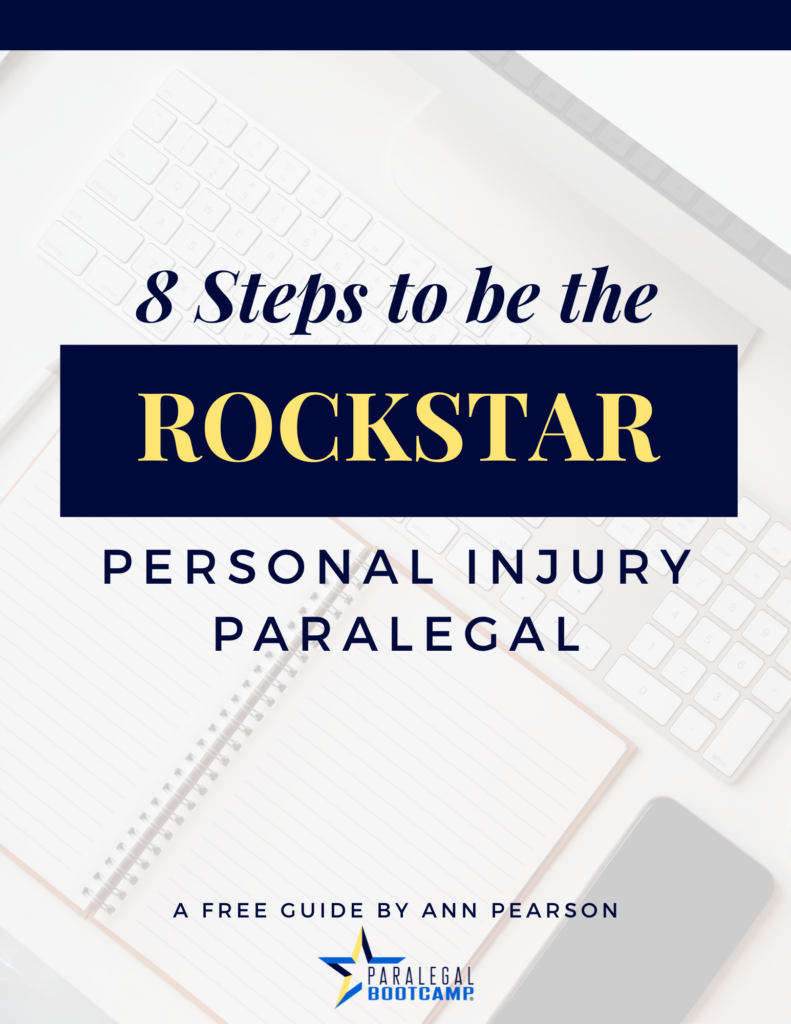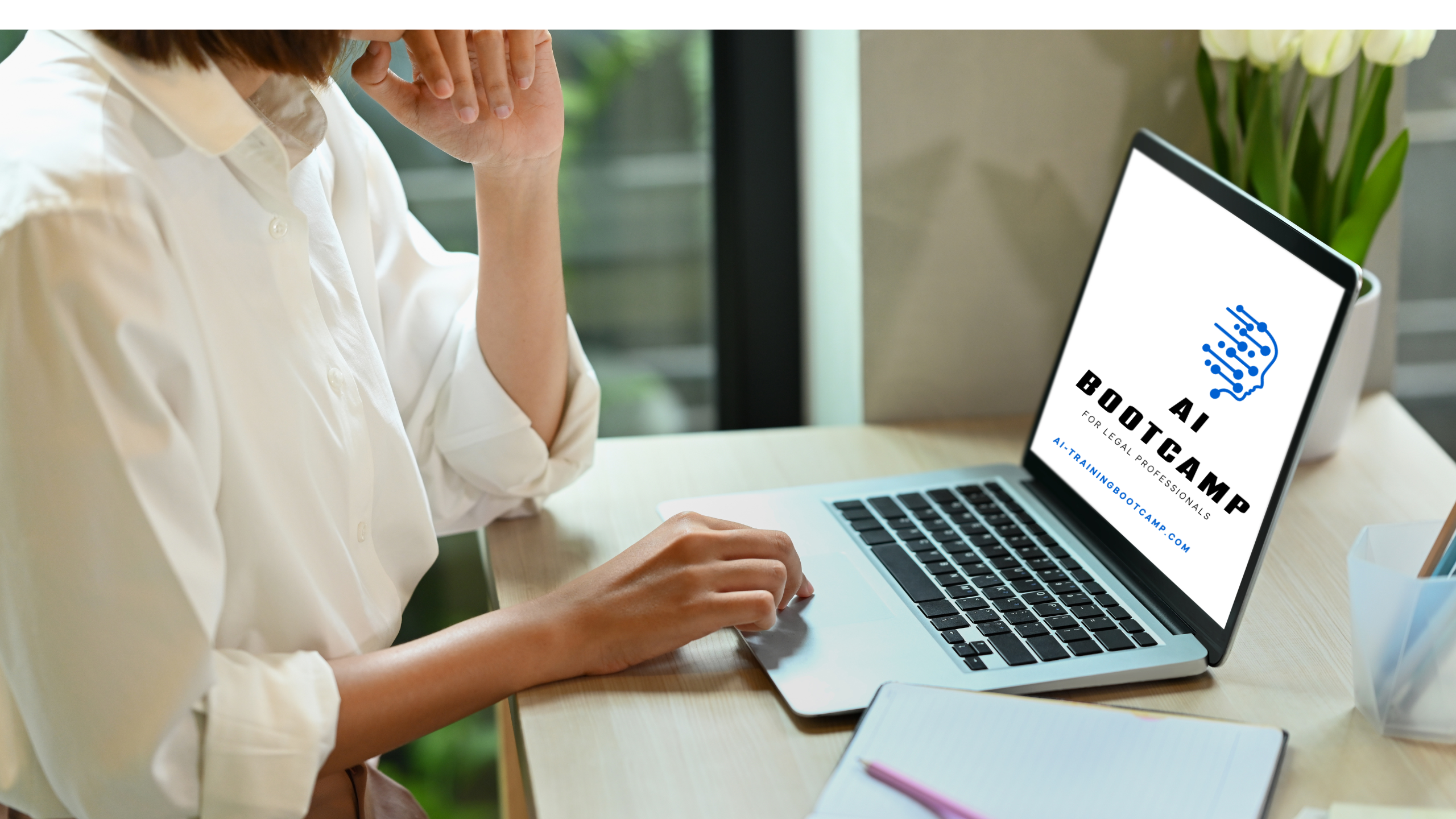The backbone of all good personal injury law firms is its paralegals. Paralegals are essential to a personal injury law firm, whether for a solo practitioner or a large firm with many lawyers.
The tricky part of being a personal injury paralegal is understanding the law and understanding the medical terminology, along with the many other paralegal skills required to succeed.
Watch this paralegal training below!
Besides taking our carefully tailored personal injury course, some of the most important steps to becoming a rockstar personal injury paralegal are the following:
1. Learn the Basics of Anatomy and Medicine
A valuable personal injury paralegal is a paralegal who knows not only the law but also the medicine. It may be more critical for the paralegal to know the medicine than the law. Among other important paralegal skills, knowing the medicine allows the lawyers more time to practice law and bring in more clients.
The lawyer(s) at the firm can help guide you on the law while you guide them on the medicine. Knowing the medicine, you can direct the lawyer in the right direction by finding relevant medical chronologies related to that injury. It can also save a lawyer time, which makes you invaluable to the lawyer.
Some ways that you can learn anatomy and medicine include the following:
-
- Grab a medical school study guide or an anatomy or physiology guidebook, some being the renowned “for dummies” series, but also the Demystified series has very helpful anatomy and drawings. Read these books and tab important parts or buy them online and keep them in your desk or at home to research at night.
-
- Watch videos online of basic anatomy and physiology, which are free through YouTube. You can even watch surgeries like the kinds of your clients are getting to better understand what happens, recovery time, and after-effects/permanent disability.
-
- Learn about broken bones and their surgeries (closed reduction versus an open reduction) and soft tissue injuries to the neck and back.
-
- Find and keep a chart or diagram of the bones and largest muscle systems.
-
- Google is your friend, and make sure to search online whenever you have a question before you ask a lawyer (but make sure the information is from a reliable source!).
-
- Ask other personal injury paralegals at your firm how they became more familiar with the medicine and anatomy. Many firms have resources in-house to help the lawyers and support staff which can be particularly helpful.
Personal Injury Paralegal Boot Camp
As a personal injury paralegal, you have an important role in the pre-litigation phase of your claim files.
But where do you even start when you’re managing 80+ active files?
This online course will give you all the tools to manage that heavy case load. It walks you through every phase of your personal injury claim files, from the case intake through the demand package and more.

2. Know the Statute of Limitations Period
The statute of limitations is a time limit on a particular cause of action. The failure to commence a lawsuit within this time period will likely result in the lawsuit being dismissed by a court. If the law firm accepted the case before the statute of limitations period expired, it could result in a finding of legal malpractice.
While this is an issue that concerns the lawyers, it affects the entire firm, including you. As a personal injury paralegal, you need to know every type of statute of limitations period, the exceptions, and memorize them for every one of your cases that have not been commenced yet (i.e., initial intake).
You should then remind your lawyer(s) of the statute of limitations period as the cases get closer to those time limits – and not just one reminder.
Most personal injury firms have docketing or calendaring software that automates this process. If your firm doesn’t, then set a reminder on your calendar for 60 days out from the statute date, 30 days out, 15 days out, five days out, and the day of expiration. When each of these reminders comes up on your calendar, send the attorney a reminder email.

3. Learn Medical Abbreviations
Medical professionals use a lot of shorthand in their notes and medical charts. Some of these medical abbreviations are obvious, while others are not. All personal injury paralegals need to learn these abbreviations and lingo to avoid making mistakes in transcribing records or missing essential points in the records.
Unfortunately, many of these abbreviations will not be known ahead of time. As you come upon these abbreviations, you should write them down in a chart and research them online. Some basic abbreviations like a “circle R or L” mean left and right, and a C with a line above it is “with.” Other abbreviations such as fx (fracture), dx (diagnosis), rx (prescription), and hx (history) are frequently used in medical records that you will be reviewing.
But other abbreviations may be less intuitive yet still need to be researched and recorded in your chart when you come across them.
4. Understand Medical Terminology
Depending on whether or not your personal injury law firm has specific injury claims that they specialize in, knowing those medical terms will be vital to your paralegal job duties. For example, knowing the difference between a distal fracture and a proximal fracture could be very important because it changes the entire location—and sometimes the entire value—of a case.
Other terminologies such as radiculopathy or neuropathy are also important to understand what they are and how they can be caused in an accident. There will be common terminology that you come across repeatedly, which you should research and write down on your cheat sheet. Continue to go back over your sheet to evaluate all critical terms to keep it fresh in your head.
5. Know How to Obtain Medical Records Quickly and Efficiently
Obtaining medical records is one of the most common things a paralegal will do in a personal injury law firm. This includes records from hospitals, primary care physicians, surgical groups, and doctors’ offices. Knowing how to request and obtain these medical records quickly is essential, especially when a statute of limitations is approaching.
It is also important to ask the lawyer or lawyers you are working with whether they prefer paper medical records or digital copies. More and more healthcare providers can provide digital records that can save your law firm both time and money when making these types of record requests.
Waiting for medical records is one of the bottlenecks that I discuss in detail inside the Personal Injury Paralegal Training program. When you are the personal injury paralegal who finds and fixes the bottlenecks, you are the firm’s rockstar paralegal!
6. Develop Templates and Keep Improving Them
Having form letters is very important to make your work quicker and more efficient. However, developing these form letters by improving them with the advice of the lawyers you are working with will help elevate your work product. This does not have to be formally either. If your lawyer is making certain edits to your letters, begin by incorporating those edits into your form letters. From there, once the edits stop, you know you have a solid form letter.
A Paralegal Resource For You

Free Guide for
Personal Injury Paralegals
Are you ready to be a rockstar personal injury paralegal?
When you’re starting out, it’s hard to know where to even start. We’ve got you covered! Here is your checklist.
The Paralegal Boot Camp gives you 8 actionable steps to get you started right now on a path to success.
Our free guide shares the 8 steps you need to take right now to start standing out at your firm.
7. Keep a Database of Outside Experts
You will work with a lot of experts and providers as a personal injury paralegal. Some will be the same primary care or orthopedists from case after case. Others will be the experts that you hire for a case. Keeping track of their contact information is important, but how they perform on your motion or at trial is even more critical.
You do not want to work with weak experts and should know when a treating doctor will not give a strong position (for settlement purposes).
To become a rockstar personal injury paralegal, keeping track of the experts that the other side uses will also set you apart. This includes the cases they were in, their opinions, and some highlights from cross-examination that could be used to impeach the expert in future cases.
In addition, having scanned copies of affidavits in other cases or motions can be used in the future to show a jury that the expert is just a “hired gun” or says the same thing for the defense each time.
Keeping track of the information is an integral part of litigation support that personal injury paralegals should do and indispensable paralegals always do.
8. Know the Litigation Process
In many personal injury firms, paralegal roles are segmented into the typical phases of a personal injury claim. For example, in some firms, the claim file moves from the Case Intake/Case Manager to the Litigation Paralegal when the claim does not settle after the demand letter is sent to the insurance company.
Read this article I wrote about different roles in a personal injury law firm.
Even if your paralegal job description or job title focuses on the case intake or pre-litigation phase of the personal injury claim, you should still familiarize yourself with what happens after your claim files become litigation cases. This will make you a more valuable employee, even if you currently only handle the case intake or medical records phases.
Learn how to become the rockstar personal injury case manager.
Litigation Paralegal Boot Camp
Are you tired of being the Panic Mode Paralegal who spends your days playing whack-a-mole with last-minute rush projects because you’re waiting for someone to show you what it takes to be great litigation paralegal?
This is the only program of its kind that provides litigation paralegals with all of the tools to master litigation cases from the complaint through the trial, and everything in between.
You will be the Confident Case Strategist faster than you ever imagined possible.

Fast-Track Your Personal Injury Paralegal Career
These are just some of the important tips on how to become an indispensable personal injury paralegal.
Some others that I didn’t have a chance to cover were things that other guest bloggers wrote about, like:
Tips for Drafting a Demand Letter, Streamlining Medical Records Retrieval, and tips for preparing Medical Records Summaries.
Notwithstanding these important tips, you must know the foundations of being a personal injury paralegal. You can do that and more through our Personal Injury Paralegal Boot Camp available online, specifically focused on a paralegal’s role in plaintiff personal injury law firms.
Meet the Author

Ann Pearson is the Founder of the Paralegal Boot Camp, and host of the Paralegals on Fire! Podcast Show, and passionate about promoting the paralegal profession.
Ann spent 20 years working as a paralegal manager and a litigation paralegal before opening the Paralegal Boot Camp in 2010.
Ann’s training programs focus on adding immediate value to a paralegal’s career and bridging the gap between what a paralegal learns in school and what they actually do on the job.
Visit the About Us Page to learn more about why Ann started the Paralegal Boot Camp.

























